Glossary
a

Almonds are nutrient-rich nuts known for their crunchy texture and mildly sweet flavour. They are commonly eaten raw, roasted, or used in baked goods and confections. Almonds are high in healthy fats, protein, vitamin E, and magnesium, making them beneficial for heart health and skin. They can be ground into flour, made into almond milk, or used as a topping for salads and desserts.

Anchovies are small, saltwater fish known for their intense, salty flavour. They are commonly used as a flavouring ingredient in sauces, dressings, and marinades. Anchovies are rich in omega-3 fatty acids and protein, and they add an umami depth to dishes like Caesar salad and puttanesca sauce.
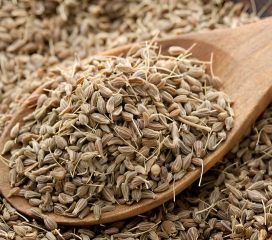
Anise seeds have a sweet, liquorice-like flavour and are commonly used in baking, liqueurs, and spice blends. The seeds are rich in essential oils that aid digestion and reduce bloating. Anise is popular in Mediterranean and Middle Eastern cuisines and is often used in cookies, bread, and savoury dishes.
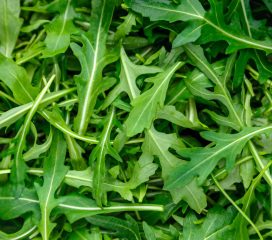
Arugula is a peppery, leafy green vegetable commonly used in salads and as a garnish. It’s slightly bitter taste pairs well with citrus, nuts, and cheeses. Arugula is packed with vitamins A, C, and K, as well as antioxidants that support cardiovascular health.
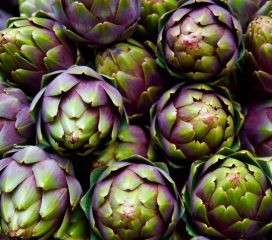
Artichokes are edible flower buds prized for their tender leaves and meaty heart. They are often steamed, grilled, or used in dips. Artichokes contain dietary fibre, vitamin C, and antioxidants. They are also known to support liver health and aid digestion.
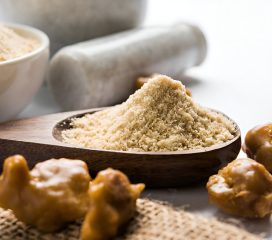
Asafoetida is a pungent, resinous spice often used in Indian cooking to impart a savoury, umami flavour similar to garlic and onion. It is known for its digestive benefits and is commonly used in lentil dishes and curries.
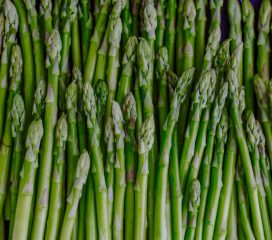
Asparagus spears are tender, slightly sweet vegetables often roasted, grilled, or steamed. They are rich in folate, vitamins A, C, and K, and are known for their diuretic properties. Asparagus pairs well with eggs, pasta, and meats.
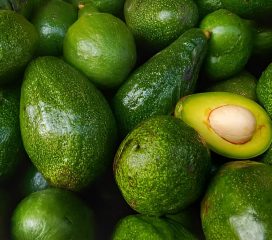
Avocado is a creamy, nutrient-dense fruit high in healthy monounsaturated fats and fibre. It is commonly used in salads, sandwiches, and dips like guacamole. Avocados are beneficial for heart health and are rich in potassium and vitamin E.
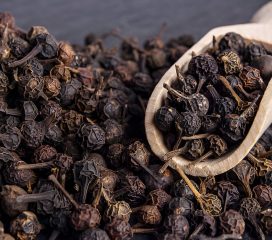
Allspice berries resemble large peppercorns and have a warm, spicy flavour reminiscent of cinnamon, nutmeg, and cloves. Used in both sweet and savoury dishes, allspice is integral to Caribbean jerk seasoning and holiday baking.

Amaranth is a gluten-free ancient grain known for its high protein and mineral content. It has a slightly nutty, earthy flavour and can be cooked as a porridge, popped like popcorn, or used in baked goods. Amaranth is rich in iron, magnesium, and lysine.
B
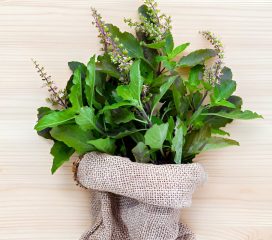
Basil is a fragrant herb widely used in Italian, Thai, and Indian cuisines. It has a slightly sweet, peppery flavour with a hint of mint. Fresh basil leaves are often used in pesto, salads, and pasta dishes, while dried basil is a common seasoning. Rich in vitamin K, antioxidants, and essential oils, basil supports digestion and reduces inflammation.
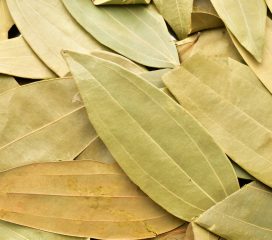
Bay leaves are aromatic, dried leaves used to add depth to soups, stews, and curries. They impart a slightly floral, herbal flavour and are typically removed before serving. Bay leaves are commonly used in Indian, Mediterranean, and European dishes to enhance slow-cooked recipes.
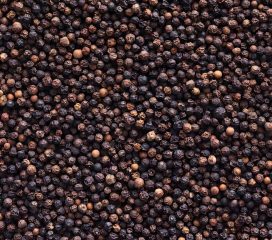
Known as the “king of spices,” black pepper is made from dried, unripe peppercorns. It has a pungent, spicy flavour and is used in virtually every cuisine. Black pepper enhances savoury dishes, marinades, and spice blends, and also has antioxidant and digestive benefits.
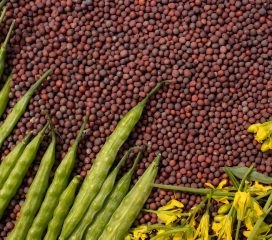
Brown mustard seeds have a sharp, slightly bitter taste and are commonly used in Indian cooking, particularly in tempering. They are known for their spicy heat and are often used to make mustard paste, spice blends, and pickles.
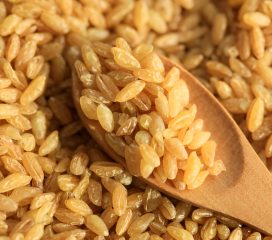
Bulgur is a whole grain made from cracked, partially cooked wheat kernels. It has a mild, nutty flavour and is commonly used in Middle Eastern dishes like tabbouleh and pilaf. Bulgur is high in fibre, protein, and B vitamins, making it a nutritious grain option.
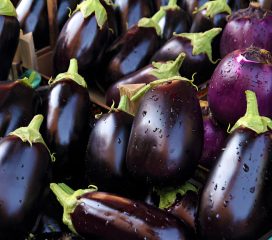
Brinjal, also known as Aubergine or Eggplant, is a versatile vegetable commonly used in Indian, Mediterranean, and Asian cuisines. Its mild, slightly bitter taste pairs well with robust spices. Roasted, grilled, or cooked in curries, brinjal is rich in dietary fibre and antioxidants.
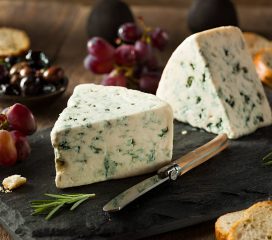
A type of cheese known for its distinct blue or green veins, blue cheese has a pungent, tangy taste. It is made from cow, goat, or sheep’s milk and aged with Penicillium cultures. Often used in salads, dressings, and gourmet dishes, it is high in calcium and probiotics.

Black beans are small, shiny legumes common in Latin American cuisine. They have an earthy, slightly sweet taste and are high in protein, fibre, and iron. Often used in soups, stews, and rice dishes, they are also popular in vegetarian recipes.
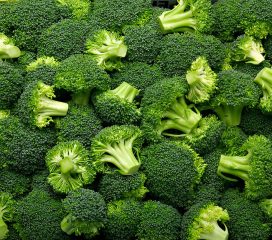
A nutrient-dense vegetable from the cabbage family, broccoli is rich in vitamins C, K, and fibre. It has a slightly bitter, earthy flavour and is commonly steamed, sautéed, or roasted. Broccoli is known for its antioxidant properties and supports digestive health.
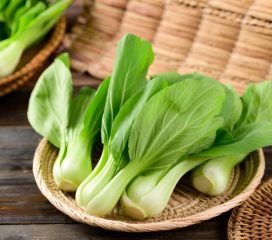
A type of Chinese cabbage, Bok Choy has crisp, white stalks and tender, dark green leaves. It has a mild, slightly peppery flavour and is often stir-fried or added to soups. Rich in vitamins A and C, Bok Choy is a staple in Asian cooking.
C
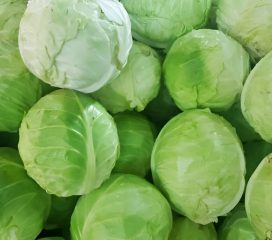
Cabbage is a leafy vegetable used in salads, stir-fries, and fermented dishes like sauerkraut. It has a crisp texture and a mildly peppery taste. Rich in vitamin C and fibre, cabbage supports digestion and immunity.
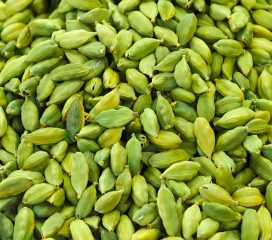
Cardamom is an aromatic spice known for its sweet, floral flavour. It is commonly used in Indian sweets, curries, and spiced beverages. The pods contain small seeds that are ground or used whole. Cardamom is also valued for its digestive and aromatic properties.
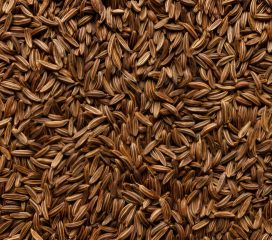
Caraway seeds have a warm, slightly bitter taste with hints of anise. They are used in rye bread, sauerkraut, and European stews. These seeds aid digestion and are often incorporated into spice blends and pickling.
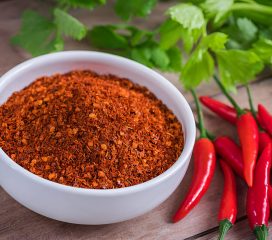
Cayenne pepper is a hot, pungent spice made from dried and ground red chillies. It adds heat to sauces, marinades, and spice blends. Rich in capsaicin, cayenne aids metabolism and improves circulation.
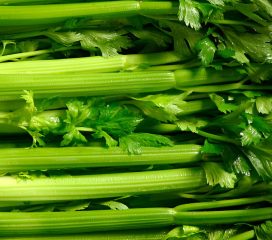
Celery is a crunchy vegetable known for its refreshing taste and high water content. It is used in salads, soups, and as a flavour base in stocks. Celery is low in calories and high in vitamin K and folate.

Chia seeds are tiny, nutrient-dense seeds that swell when soaked in liquid. They are used in smoothies, puddings, and as a thickening agent. High in omega-3 fatty acids and fibre, chia seeds support heart health.
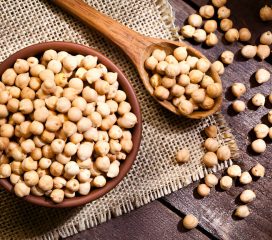
Chickpeas are versatile legumes used in dishes like hummus, curries, and salads. They have a mild, nutty flavour and a firm texture. Chickpeas are an excellent source of protein, fibre, and essential minerals.
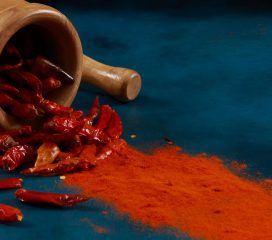
Chilli powder is a ground spice made from dried red chillies. It varies in heat and is used to add spice to curries, marinades, and stews. It is rich in antioxidants and vitamins A and C.

Cinnamon is a warm, sweet spice derived from the inner bark of cinnamon trees. It is used in desserts, baked goods, and spice blends. Known for its antioxidant properties, cinnamon also aids blood sugar regulation.
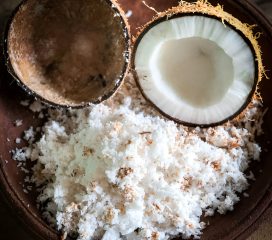
Coconut is a tropical fruit used in various forms, including milk, oil, and shredded meat. It has a rich, creamy flavour and is essential in South Indian, Thai, and Caribbean cuisines. Coconut is high in healthy fats and provides energy.
D
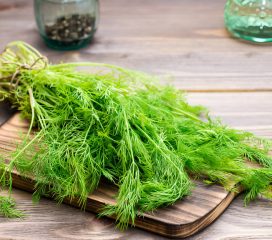
Dill is a fragrant herb known for its feathery leaves and fresh, slightly sweet flavour with a hint of anise. It is commonly used in pickling, salads, and seafood dishes. Rich in vitamin C and antioxidants, dill aids digestion and adds a vibrant flavour to dishes.

Dates are naturally sweet fruits from the date palm tree, often eaten dried. They have a chewy texture and caramel-like flavour. Dates are commonly used in desserts, smoothies, and as a natural sweetener. They are high in fibre, potassium, and antioxidants.
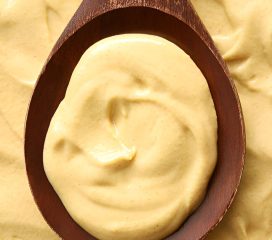
A smooth, mildly spicy mustard originating from France, Dijon mustard is made from brown or black mustard seeds and white wine. It is used in sauces, dressings, and marinades, offering a tangy, sharp taste. It is a staple in French cuisine and gourmet sandwiches.
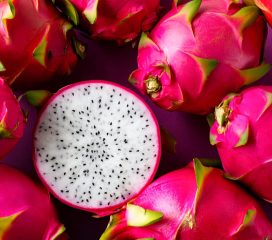
A tropical fruit with a vibrant pink or yellow exterior and white or red speckled flesh. It has a mildly sweet, refreshing taste. Dragon fruit is rich in vitamin C, fibre, and antioxidants, making it a popular choice in smoothies and fruit salads.
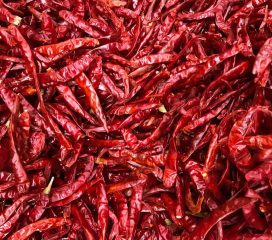
These are sun-dried varieties of red chillies, often used whole or ground into powder. They add a deep, earthy heat to curries, sauces, and spice blends. Dried chillies are common in Indian, Mexican, and Thai cuisines.
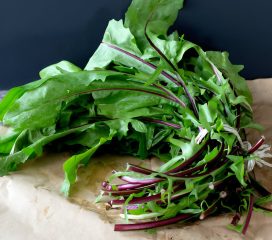
The leaves of the dandelion plant, known for their slightly bitter taste. They are commonly used in salads, soups, and herbal teas. Dandelion greens are high in vitamins A, C, and K, and support liver health.

A Middle Eastern spice blend made from roasted nuts, seeds, and spices like cumin and coriander. It is used as a dip for bread, sprinkled over salads, or as a seasoning for meats. Dukkah offers a crunchy texture and aromatic flavour.

Chocolate with a high cocoa content, known for its rich, slightly bitter taste. Dark chocolate is used in baking, desserts, and as a snack. It contains flavonoids that may improve heart health and is rich in magnesium.
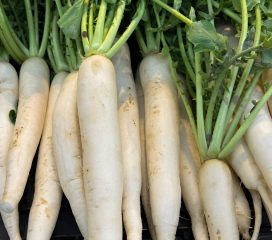
A large, white radish with a crisp texture and mild, slightly peppery flavour. It is commonly used in Asian cuisines, especially in pickles, soups, and stir-fries. Daikon aids digestion and is low in calories.
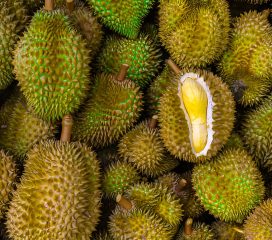
Known as the “king of fruits,” durian has a strong odour and a creamy, custard-like texture. It is loved and loathed for its pungent aroma but prized for its sweet, rich flavour. Durian is a popular fruit in Southeast Asia, known for its high energy content and nutrients.
E

Eggs are a versatile kitchen staple packed with protein and essential nutrients. Found in nearly every cuisine around the world, they’re enjoyed in countless ways, from scrambled, boiled, and poached to baked into cakes and pastries. Whether used as a binding agent, leavening ingredient, or enjoyed on their own, eggs play a vital role in both sweet and savoury dishes. Rich in vitamins B12 and D, along with iron and choline, they’re a nutritious choice for any meal.
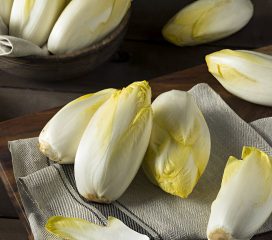
Endive is a leafy vegetable from the chicory family, known for its slightly bitter, crisp leaves that add texture and flavour to salads and appetisers. Often used in European cuisine, it can be eaten raw or lightly cooked to soften its bitterness. Endive comes in several varieties, including curly and Belgian types, which can be grilled or braised. It’s low in calories and rich in vitamins A, C, and K, as well as fibre, making it a healthy addition to any diet. Its bitterness balances rich or creamy flavours perfectly.

Edamame refers to young, green soybeans harvested before fully ripening, commonly found in East Asian cuisines. Typically boiled or steamed and lightly salted, they make a nutritious snack or appetiser. Edamame is high in protein, fibre, and essential amino acids, making it a favourite among vegetarians and health-conscious eaters. These beans also provide vitamins such as folate and minerals like iron and magnesium. Their mild, slightly nutty flavour and firm texture make them a versatile ingredient in salads, stir-fries, and soups.

Elderflower is harvested from the blossoms of the elder tree and is celebrated for its delicate floral aroma and subtly sweet flavour. Commonly used to make elderflower cordial, syrups, and flavourings for desserts, elderflower adds a fresh, fragrant note to beverages and sweets. It is popular in British and European culinary traditions. Beyond its culinary uses, elderflower is recognised for its antioxidant properties and has been traditionally used to soothe colds and alleviate inflammation. The flowers are best used fresh or dried carefully to preserve their delicate essence.
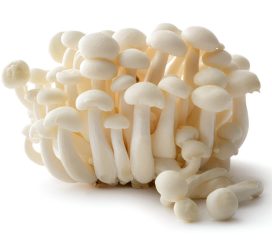
Enoki mushrooms are slender, delicate mushrooms prized in East Asian cooking for their mild, slightly fruity flavour and crisp texture. They grow in long clusters with tiny white caps and add a subtle crunch to soups, salads, stir-fries, and hot pots. Enoki mushrooms are low in calories but rich in antioxidants and dietary fibre, making them a nutritious addition to many dishes. Their unique texture and gentle taste make them popular both as a garnish and a main ingredient in light, healthy meals.
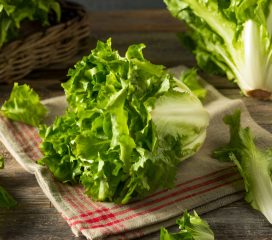
Escarole is a leafy green vegetable from the chicory family with broad, slightly bitter leaves. Popular in Mediterranean and Italian cooking, it is often added to soups, stews, and salads. Its mild bitterness adds complexity and balances rich or fatty foods. Escarole is a good source of vitamins A and C, as well as dietary fibre. The leaves can be eaten raw or cooked to soften their flavour. Its versatility and nutritional benefits make it a popular choice in both traditional and contemporary dishes.

Emmental cheese is a Swiss cheese famous for its distinctive holes or “eyes” and mild, nutty flavour. Made from cow’s milk, it has a firm yet elastic texture and melts beautifully, making it ideal for fondues, sandwiches, and gratins. Emmental is rich in calcium and protein, contributing to bone health and muscle maintenance. It originates from the Emmental region in Switzerland and has become popular worldwide for its smooth taste and versatility in cooking.
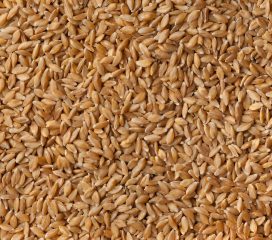
Einkorn wheat is an ancient grain known as one of the earliest cultivated wheats. It has a nutty, slightly sweet flavour and a chewy texture, making it popular in artisanal bread and pasta. Compared to modern wheat, einkorn retains more nutrients such as protein, vitamins, and minerals, and some people find it easier to digest. Its flour is used for rustic baked goods and offers a wholesome, earthy flavour. Einkorn is gaining renewed interest in health-conscious and heritage grain circles.
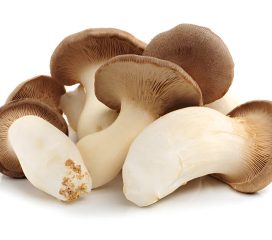
Eryngii mushrooms, or king oyster mushrooms, are prized for their thick, meaty stems and mild, savoury taste. Popular in East Asian cooking, they can be grilled, sautéed, or added to soups and stir-fries. Their firm texture holds up well to cooking, making them a favourite meat substitute for vegetarian dishes. Nutritionally, they provide protein, fibre, and B vitamins, supporting energy metabolism and digestion. Their subtle umami flavour enhances many dishes without overpowering other ingredients.
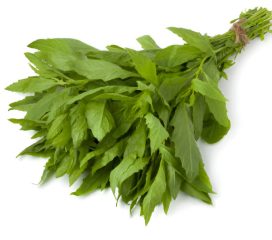
Epazote is a pungent herb native to Mexico, commonly used in traditional Mexican cuisine. It has a strong, medicinal aroma and a flavour described as a mix of oregano, anise, and citrus. Epazote is often added to bean dishes to reduce gas and aid digestion. It is rich in essential oils and antioxidants. Used sparingly, epazote adds complexity to soups, stews, and quesadillas. Though unfamiliar outside Latin America, it is essential to authentic Mexican cooking.
F

Fenugreek is a versatile herb used widely in Indian and Middle Eastern cooking. Both its seeds and leaves are edible and prized for their distinct, slightly bitter flavour with hints of maple syrup. The seeds are often toasted and ground into spice blends like garam masala or used whole in curries, dals, and pickles. Fenugreek leaves, fresh or dried (known as kasuri methi), add an earthy aroma to dishes. Fenugreek has medicinal properties, traditionally used to aid digestion and regulate blood sugar. It’s rich in fibre, vitamins, and minerals.
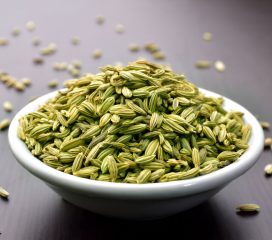
Fennel seeds are small, greenish-brown seeds harvested from the fennel plant, known for their sweet, anise-like flavour. They are popular in Indian cuisine as a digestive aid and mouth freshener after meals. Fennel seeds are used whole or ground in spice blends, curries, sausages, and baked goods. Beyond flavour, they offer antioxidants and vitamins and have anti-inflammatory properties. Their refreshing taste balances rich or spicy dishes and enhances both savoury and sweet recipes globally.

Feta is a crumbly, salty cheese originating from Greece, traditionally made from sheep’s or goat’s milk. Its tangy flavour and slightly grainy texture make it a popular addition to salads, pastries, and Mediterranean dishes. Feta is rich in protein, calcium, and probiotics, supporting bone health and digestion. Unlike harder cheeses, it does not melt but softens when heated. Its salty, tangy profile complements fresh vegetables, olives, and herbs, adding a burst of flavour to many recipes.
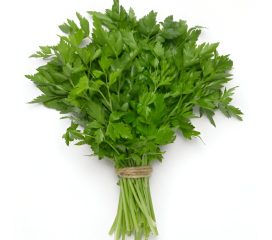
Flatleaf parsley, also known as Italian parsley, has broad, flat leaves and a fresh, slightly peppery flavour. It is a staple herb in many cuisines worldwide, used both as a garnish and flavouring. Parsley adds brightness to soups, sauces, salads, and marinades. Rich in vitamins A, C, and K, it supports immune health and bone strength. Compared to curly parsley, flatleaf has a stronger, more robust flavour and is preferred for cooking.

Flaxseeds are small, golden or brown seeds rich in omega-3 fatty acids, fibre, and lignans with antioxidant properties. Widely used in health foods, they support heart health, digestion, and hormone balance. Flaxseeds can be eaten whole, ground, or as oil and are added to smoothies, baked goods, cereals, and salads. Their mild, nutty flavour complements both sweet and savoury dishes. They are particularly valued in vegetarian and vegan diets as a source of plant-based nutrition.

Figs are sweet, soft fruits with a chewy flesh, crunchy seeds, and a thin skin that ranges from green to deep purple. Native to the Mediterranean and Western Asia, figs are enjoyed fresh or dried and feature in desserts, jams, salads, and savoury dishes. They provide dietary fibre, vitamins, and minerals like potassium and calcium. Figs’ natural sweetness and unique texture make them a versatile ingredient that pairs well with cheese, nuts, and cured meats.

Fruit vinegar is made by fermenting various fruits such as apples, pears, or berries. It offers a fruity tang with varying sweetness and acidity depending on the fruit used. Apple cider vinegar is the most common type, known for its health benefits, including aiding digestion and blood sugar control. Fruit vinegars are used in salad dressings, marinades, and sauces to add brightness and depth. Their aromatic qualities complement both sweet and savoury dishes.
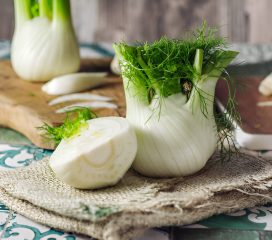
The fennel bulb is a crunchy, white vegetable with a mild, liquorice-like flavour. Common in Mediterranean and Indian cooking, it is eaten raw in salads or cooked in soups, stews, and roasts. The bulb’s subtle sweetness and aromatic qualities add complexity to dishes. Fennel bulbs are a good source of fibre, vitamin C, and antioxidants. Both the bulb and fronds are edible, making fennel a versatile ingredient.
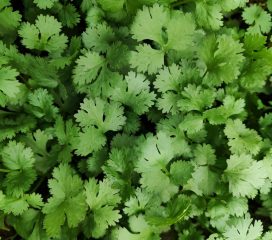
Fresh coriander leaves, known as cilantro in some regions, have a bright, citrusy flavour that is essential in Indian, Mexican, and Southeast Asian cuisines. Used as a garnish or ingredient, coriander adds freshness to chutneys, salads, curries, and salsas. It contains vitamins A, C, and K, and antioxidants. Its distinctive flavour can be polarising, but it enhances the aroma and balance of many dishes worldwide.
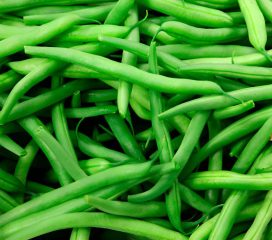
French beans, also called green beans or haricots verts, are slender, tender pods widely used in Indian and European cooking. They can be steamed, sautéed, or added to stir-fries and salads. French beans are low in calories and high in vitamins A, C, and fibre. Their crisp texture and mild flavour make them a popular vegetable for both simple and elaborate dishes, providing a fresh, crunchy element.
G
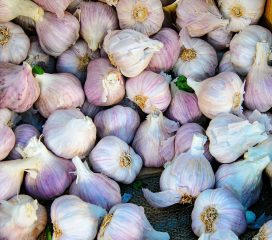
Garlic is a pungent, aromatic bulb widely used across many world cuisines, from Indian curries to Italian pastas. It is valued not only for its distinctive flavour but also for its health benefits, largely due to allicin, a compound released when garlic is crushed or chopped. Allicin is known for its antibacterial, antiviral, and anti-inflammatory properties, and garlic has been linked to improved cardiovascular health. It can be used fresh, roasted, sautéed, or powdered, adding depth and warmth to savoury dishes. Garlic’s strong aroma mellows with cooking, making it a kitchen staple globally.
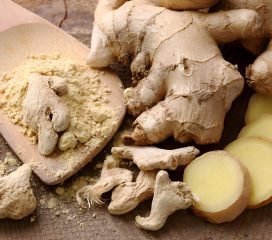
Ginger is a fragrant, spicy rhizome widely used in cooking and traditional medicine. Originating from South and Southeast Asia, it adds a warm, zesty flavour to dishes ranging from Indian curries to Western baked goods and beverages. Fresh ginger offers a sharp, peppery taste with citrus undertones, while dried or powdered forms are slightly milder. Beyond its culinary uses, ginger is celebrated for its digestive and anti-inflammatory benefits. It helps soothe nausea and supports immunity. Ginger is commonly used in teas, stir-fries, marinades, and desserts, making it an essential ingredient in many kitchens worldwide.
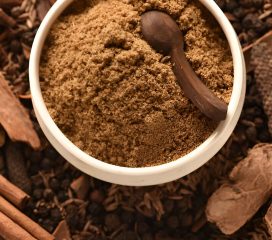
Garam masala is a quintessential Indian spice blend, essential for adding warmth and complexity to a variety of dishes. It typically includes a mix of cinnamon, cloves, cardamom, cumin, black pepper, and sometimes nutmeg or bay leaves, all toasted and ground to release their fragrant oils. Used in curries, soups, marinades, and lentil dishes, garam masala elevates the flavour profile with its aromatic and slightly sweet notes. Unlike other spice blends, it is usually added towards the end of cooking to preserve its aroma. Garam masala is a staple in Indian households and has gained popularity worldwide.
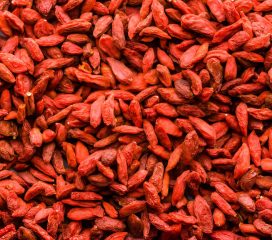
Goji berries are small, bright red berries often referred to as a superfood due to their rich nutritional profile. Traditionally used in Chinese medicine, they have a sweet-tart flavour and chewy texture. Goji berries are packed with antioxidants, vitamins A and C, and essential minerals, which support immune health and protect against oxidative stress. These berries can be eaten raw, added to smoothies, cereals, teas, or baked goods. Their vibrant colour and health benefits have made them popular globally, though their taste is quite distinct and might take some getting used to.

Galangal is a root similar in appearance to ginger but with a sharper, citrusy, and pine-like flavour. It is a key ingredient in Southeast Asian cooking, particularly Thai, Indonesian, and Malaysian cuisines, where it is used in soups, curries, and spice pastes. Unlike ginger, galangal has a tougher texture and a more pronounced aroma. It adds a distinctive freshness and a subtle peppery kick to dishes. Fresh galangal is preferred, but can be substituted with dried or powdered forms when unavailable. Apart from flavour, it is believed to have digestive and anti-inflammatory properties.
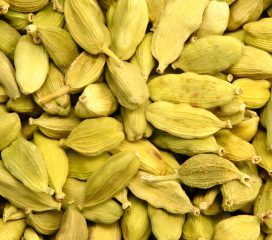
Green cardamom is one of the most prized spices worldwide, known for its sweet, floral, and slightly citrusy flavour. The pods contain tiny black seeds used whole or ground in both sweet and savoury dishes. It is essential in Indian chai, Middle Eastern desserts, and Scandinavian baking. Cardamom lends a warming aroma and subtle complexity to food, enhancing flavours without overpowering them. Besides culinary uses, it is traditionally used to aid digestion and freshen breath. Green cardamom’s versatile flavour makes it a favourite in many global cuisines.
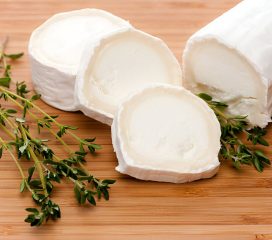
Goat cheese, also known as chèvre, is a creamy, tangy cheese made from goat’s milk. It varies in texture from soft and spreadable to firm and crumbly. Known for its earthy, slightly tart flavour, goat cheese is popular in Mediterranean and European cuisines. It is often used in salads, tarts, pizzas, and as a spread. Compared to cow’s milk cheese, it has a distinctive aroma and is generally easier to digest for some people. Goat cheese is rich in protein, calcium, and beneficial probiotics, making it a nutritious addition to many dishes.
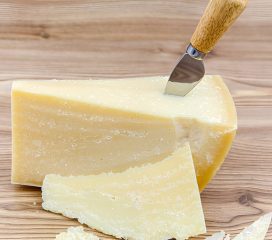
Grana Padano is a hard, Italian cheese similar to Parmesan but with a milder, nuttier flavour. It is made from partially skimmed cow’s milk and aged for a minimum of nine months. The cheese is granular in texture and is commonly grated over pasta, risotto, and soups or eaten in chunks with fruit and honey. Grana Padano is rich in calcium, protein, and vitamins, supporting bone and muscle health. Its delicate taste and versatility have made it a staple in Italian cooking and beyond.

Groundnuts, commonly known as peanuts, are a legume widely used as snacks, in cooking, and confectionery. They have a rich, nutty flavour and are consumed raw, roasted, or as peanut butter. Groundnuts are high in protein, healthy fats, and vitamins such as E and B-complex. In Indian cuisine, they are used in chutneys, sweets, and savoury dishes, while internationally, they are common in sauces, salads, and snacks. Peanuts also serve as a source of energy and support heart health, although some people may have allergies.
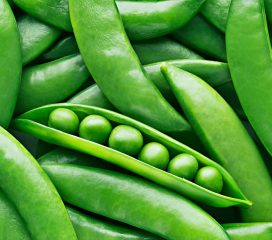
Green peas are small, round legumes that are used fresh or frozen in a variety of dishes, from soups and stews to salads and stir-fries. They have a sweet, tender flavour and are a good source of plant protein, fibre, vitamins A, C, and K, and essential minerals. In Indian cuisine, green peas are used in dishes like matar paneer and pulao, while globally, they complement many vegetable medleys and side dishes. Their nutritional benefits include supporting digestion, immune health, and providing antioxidants.
H
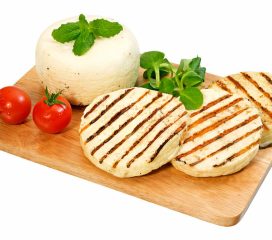
Halloumi is a semi-hard, brined cheese originating from Cyprus, known for its high melting point, which makes it ideal for grilling or frying. It has a distinctive salty and slightly tangy flavour with a firm, squeaky texture when cooked. Halloumi is traditionally made from a mixture of goat’s and sheep’s milk, though cow’s milk versions are also common. Popular in Mediterranean and Middle Eastern cuisines, it is often served in salads, sandwiches, or as a vegetarian protein alternative. Nutritionally, halloumi is rich in protein and calcium but also high in salt, so it’s best enjoyed in moderation.
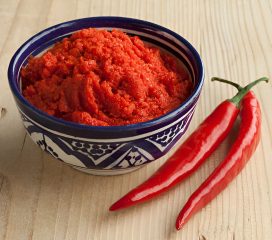
Harissa is a spicy North African chilli paste made from dried red chillies, garlic, olive oil, and various spices such as cumin and coriander. It offers a deep, smoky heat with complex aromatic notes, commonly used as a condiment or marinade in Tunisian, Moroccan, and Algerian dishes. Harissa adds warmth and depth to soups, stews, couscous, and grilled meats. It’s a versatile ingredient that can be adjusted in heat level and is gaining popularity worldwide for adding bold flavour. Harissa also contains antioxidants from its chilli content, making it a flavourful and healthful addition.

Hazelnuts are small, round nuts with a hard shell and a sweet, buttery flavour. Widely grown in Turkey, Italy, and the USA, they are used in both sweet and savoury dishes, from pralines and chocolates to salads and sauces. Hazelnuts are rich in healthy fats, protein, vitamins E and B, and minerals like magnesium. They provide a crunchy texture and nutty depth when roasted or ground into flour or butter. Hazelnuts are a staple in European desserts, including the famous gianduja chocolate spread.

Hibiscus refers to the vibrant, edible flowers of the hibiscus plant, often used to make herbal teas and infusions. Known for its tart, cranberry-like flavour and deep red colour, hibiscus tea is popular worldwide, especially in Africa, the Caribbean, and the Middle East. Beyond its refreshing taste, hibiscus is rich in antioxidants and vitamin C and may help reduce blood pressure and improve heart health. The dried petals can also be used in jams, syrups, and desserts, adding colour and tang.

Honey is a natural sweetener produced by bees from the nectar of flowers. It has a rich, sweet taste with floral undertones and varies in flavour and colour depending on the source of flowers. Used widely across cultures for centuries, honey sweetens beverages, baked goods, and sauces and acts as a natural preservative. It contains antioxidants and has antimicrobial properties, making it popular in traditional medicine. Though natural, honey is high in sugars and should be consumed in moderation.

Horseradish is a root vegetable with a pungent, spicy flavour that provides a sharp, sinus-clearing heat similar to mustard or wasabi. Common in European and American cuisines, it is often grated fresh or made into a creamy sauce served with roast beef, seafood, or sandwiches. Horseradish adds brightness and a fiery kick without overwhelming heat. It is low in calories and contains antioxidants and compounds thought to have antimicrobial benefits. Its distinctive flavour makes it a popular condiment for bold dishes.
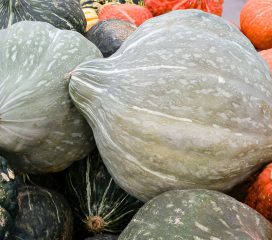
Hubbard squash is a large, hard-skinned winter squash with sweet, dense orange flesh. It has a nutty, slightly sweet flavour and is used in soups, purees, roasting, and baking. Popular in North America and increasingly found in international kitchens, Hubbard squash stores well for months. It is rich in beta-carotene, fibre, and vitamins A and C, supporting eye health and immunity. The thick skin must be peeled before cooking, but its flesh is smooth and creamy when cooked, making it ideal for hearty, comforting dishes.

Hummus is a creamy, savoury spread made from cooked and blended chickpeas, tahini (sesame paste), lemon juice, garlic, and olive oil. A staple in Middle Eastern and Mediterranean cuisine, it’s traditionally served as a dip with warm pita bread or fresh vegetables. Smooth and rich with a subtle nutty tang, hummus is also used as a sandwich spread or a base for bowls and salads. It’s packed with plant-based protein, fibre, and healthy fats, making it a nutritious, vegan-friendly option. Its simplicity and versatility have made hummus a global favourite, with countless variations incorporating beetroot, herbs, or roasted red pepper.

Huitlacoche, also called corn smut or Mexican truffle, is a fungus that grows on corn kernels, turning them into swollen, dark, spongy growths. Considered a delicacy in Mexican cuisine, huitlacoche has an earthy, smoky, and slightly sweet flavour. It’s used in quesadillas, soups, and tamales, offering a unique umami experience. Nutritionally, it contains antioxidants and fibre. Though it might look unusual, huitlacoche is highly prized for its distinctive taste and texture.

Honeydew melon is a sweet, juicy fruit with pale green flesh and a smooth, creamy texture. Native to Europe and widely cultivated worldwide, it is enjoyed fresh, in fruit salads, smoothies, or desserts. Honeydew provides hydration and is low in calories but rich in vitamin C and potassium, which support skin health and muscle function. Its mild sweetness and refreshing flavour make it a popular summer fruit and a light, healthy snack.
I
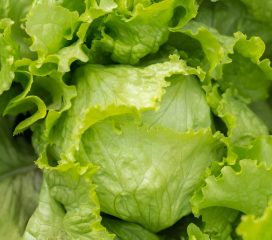
Iceberg lettuce is a crisp, pale green leafy vegetable known for its refreshing crunch and mild flavour. Popular in salads and sandwiches, it provides texture more than an intense taste. Originating in the United States, iceberg lettuce is widely cultivated worldwide. Though it has a high water content, it offers small amounts of fibre, vitamin K, and folate. Its firm, tightly packed leaves make it ideal for wedges or as a crisp base in dishes, though it is less nutrient-dense compared to darker leafy greens.

Indian bay leaf, or Tej Patta, is an aromatic leaf commonly used in Indian cooking for its subtle cinnamon-like fragrance. Unlike the Mediterranean bay leaf, it has a more complex, sweet-spicy aroma and is typically added whole to curries, biryanis, and stews to infuse flavour. It’s removed before serving. Tej Patta adds warmth and depth to dishes and complements other spices such as cloves and cinnamon. It is rich in antioxidants and used traditionally for digestive benefits.
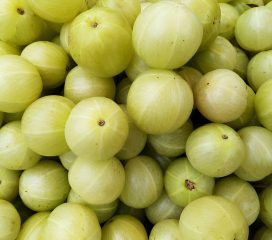
Amla is a small, sour green fruit highly prized in Indian cuisine and Ayurvedic medicine. Known for its high vitamin C content, it is a powerful antioxidant supporting immunity and skin health. Amla is used fresh, dried, or as a powder in chutneys, pickles, juices, and traditional remedies. Its tart flavour is balanced by sweet or spicy ingredients. Amla is renowned for promoting digestion, hair health, and overall wellness, making it a staple in Indian households and health-conscious diets worldwide.
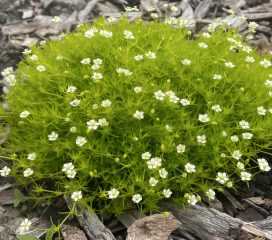
Irish moss is a type of red seaweed harvested from the Atlantic coasts, known for its thickening properties due to carrageenan content. It is widely used in Ireland and the Caribbean to prepare beverages, desserts, and soups. Irish moss is rich in minerals like iodine, calcium, and potassium and supports thyroid health. It’s valued as a natural vegan gelling agent and is believed to boost immunity and improve skin health. Its mild flavour makes it versatile in both sweet and savoury dishes.

Italian parsley, also called flat-leaf parsley, is a fragrant herb widely used in Mediterranean and international cuisines. It has a robust flavour compared to curly parsley and is used fresh as a garnish or ingredient in sauces, salads, soups, and marinades. Rich in vitamins A, C, and K, it supports immune function and bone health. Italian parsley’s bright, slightly peppery taste enhances the freshness of many dishes and is often combined with garlic and lemon for classic flavour profiles.
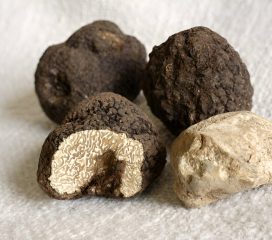
Italian truffle is a rare and prized edible fungus found in the forests of Italy, famous for its earthy, musky aroma and intense umami flavour. Used sparingly due to its strong taste and high cost, it enhances pasta, risotto, and gourmet dishes. White truffles are more delicate and fragrant, while black truffles have a deeper, richer flavour. Truffles contain antioxidants and are considered a luxury ingredient, celebrated for their ability to elevate simple dishes into extraordinary culinary experiences.

Icing sugar, also known as confectioner’s sugar, is finely ground granulated sugar blended with a small amount of anti-caking agent such as cornstarch. It dissolves quickly and is used primarily in icings, frostings, dusting desserts, and making smooth glazes. Its fine texture creates a silky finish, perfect for decorating cakes and pastries. Icing sugar is essential in baking and confectionery for achieving the ideal sweetness and texture in delicate desserts.
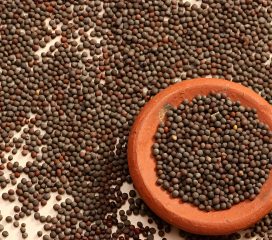
Indian mustard seeds are tiny, round seeds ranging in colour from yellow to black, widely used in Indian cooking for tempering spices. When heated in oil, they pop and release a pungent, slightly bitter flavour that forms the base of many dals, curries, and pickles. Mustard seeds are rich in selenium, magnesium, and omega-3 fatty acids, contributing health benefits such as anti-inflammatory properties. Their bold flavour is integral to the distinct aroma of Indian cuisine.
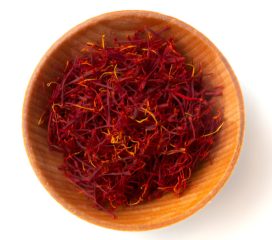
Indian saffron, known as ‘Kesar’, is the dried stigmas of the Crocus sativus flower. It is treasured for its intense golden-yellow colour and distinctive aroma, adding floral and honeyed notes to dishes. Used in Indian sweets, biryanis, and beverages, saffron is an expensive spice with antioxidant properties and mood-enhancing effects. Only a small quantity is required to impart flavour and colour, making it a luxurious ingredient celebrated worldwide.

Ice wine is a sweet dessert wine made from grapes that have naturally frozen on the vine, concentrating their sugars and flavours. Predominantly produced in Canada and Germany, ice wine has a rich, luscious taste with notes of apricot, peach, and honey. It pairs beautifully with desserts or can be enjoyed on its own. The production process is labour-intensive and weather-dependent, contributing to its exclusivity and premium price.
J
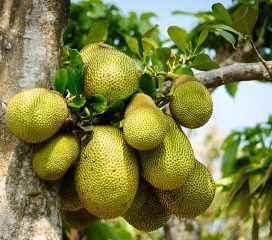
Jackfruit is a large tropical fruit native to South and Southeast Asia, known for its distinctive sweet flavour and unique texture. When unripe, it has a starchy, meat-like consistency that makes it popular as a vegan substitute for pulled pork or chicken in savoury dishes. Ripe jackfruit is sweet and fruity, often eaten fresh or used in desserts. Nutritionally, jackfruit is rich in fibre, vitamin C, and potassium. Its large size and spiky exterior make it a striking fruit, widely used in Indian, Thai, and Caribbean cuisines.

Jaggery is a traditional, unrefined sugar made from concentrated sugarcane juice or date palm sap. Common in Indian and South Asian cooking, it has a rich, caramel-like flavour and a moist, crumbly texture. Jaggery is used as a sweetener in sweets, beverages, and savoury dishes, valued for its earthy depth compared to refined white sugar. Nutritionally, it retains some minerals like iron and potassium. It’s often used in festive sweets, traditional medicines, and as a natural energy booster.

Japanese miso is a fermented soybean paste that varies in colour from white to dark brown, with a salty, umami-rich flavour. It is a staple ingredient in Japanese cuisine, used in soups, marinades, dressings, and sauces. Miso adds depth and savoury complexity to dishes and contains probiotics beneficial for gut health. Its fermentation process enhances nutrient availability and provides essential amino acids. Miso is versatile, enhancing the flavour of vegetables, meats, and seafood.

Jalapeño is a medium-sized chilli pepper originating from Mexico, known for its moderate heat level and bright, grassy flavour. Used fresh, pickled, or smoked (chipotle), jalapeños add a spicy kick to salsas, sauces, and a variety of Mexican and Tex-Mex dishes. They are rich in vitamin C and capsaicin, which may have anti-inflammatory and metabolism-boosting effects. Jalapeños are widely enjoyed worldwide for adding flavour and heat without overwhelming spiciness.
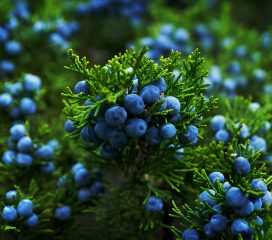
Juniper berries are the small, dark blue berries of the juniper tree, known for their piney, slightly citrusy flavour. They are commonly used to flavour gin and in European cooking, particularly with game meats, sauerkraut, and stews. Juniper berries have a unique aroma that adds a fresh, resinous note to dishes and drinks. They contain antioxidants and have been used traditionally for medicinal purposes such as aiding digestion and reducing inflammation.

Jasmine rice is a long-grain, aromatic rice primarily grown in Thailand. It is prized for its delicate floral aroma and slightly sticky texture when cooked, making it ideal for Southeast Asian cuisine. Jasmine rice is a staple accompaniment to curries, stir-fries, and grilled dishes. It is naturally gluten-free and provides carbohydrates for energy. Its fragrant scent and soft texture make it a favourite rice variety globally.
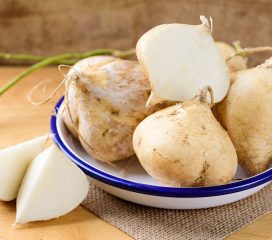
Jicama, also known as Mexican turnip, is a root vegetable with a crisp, juicy texture and mildly sweet, nutty flavour. It is eaten raw in salads or cooked in stir-fries and stews. Rich in fibre, vitamin C, and antioxidants, jicama supports digestive health and immune function. Its refreshing crunch and subtle taste make it popular in Mexican and Asian cuisines, often enjoyed as a healthy snack.

Jack cheese is a semi-soft, mild cheese originating from the United States, known for its creamy texture and buttery flavour. Variations include Monterey Jack and Pepper Jack, which contain spicy peppers. It melts well and is commonly used in sandwiches, casseroles, and Mexican-inspired dishes. Jack cheese is rich in protein and calcium, making it a popular choice for cooking and snacking.
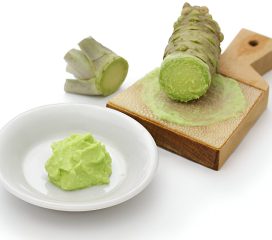
Japanese wasabi is a pungent, spicy paste made from the grated rhizome of the Wasabia japonica plant. Known for its sharp, nasal-clearing heat, it is traditionally served with sushi and sashimi to enhance flavour and freshness. Genuine wasabi is rare and expensive, often replaced by horseradish-based substitutes. Wasabi contains antimicrobial properties and adds a unique, fresh spice to Japanese cuisine.
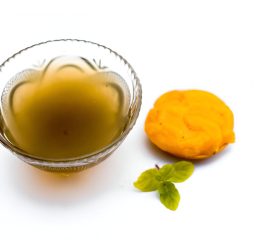
Jaggery syrup is a thick, dark liquid sweetener made by melting jaggery into a syrupy consistency. Used in Indian desserts, drinks, and traditional recipes, it offers a deep, caramel-like sweetness and rich flavour. Jaggery syrup retains minerals and antioxidants found in jaggery, making it a healthier alternative to refined syrups. It enhances both sweet and savoury dishes with its robust, earthy notes.
K
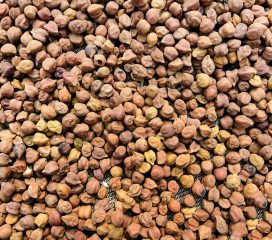
Kala chana, also known as black chickpeas, is a variety of chickpea with a dark brown or black colour and a firm texture. It is widely used in Indian cuisine for curries, salads, and snacks. Kala chana is rich in protein, dietary fibre, and essential minerals such as iron and magnesium, making it highly nutritious. Its slightly nutty flavour intensifies when cooked, and it holds its shape well during cooking. Kala chana supports digestion and helps maintain blood sugar levels, making it a popular choice in vegetarian and vegan diets.
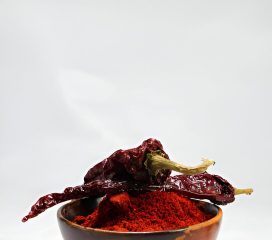
Kashmiri red chilli is prized for its vibrant red colour and mild heat, making it a favourite in Indian cooking for adding colour and flavour without overwhelming spiciness. It has a fruity, slightly smoky flavour that enhances curries, tandoori dishes, and chutneys. Unlike hotter chillies, Kashmiri chilli is often used in powdered form to impart rich colour and subtle warmth. It contains capsaicin and antioxidants, contributing to metabolism and health benefits.
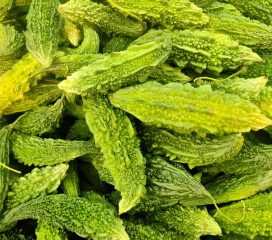
Karela, or bitter gourd, is a uniquely flavoured vegetable known for its bitter taste and numerous health benefits. Popular in Indian and Southeast Asian cuisines, it is used in stir-fries, curries, and juices. Rich in vitamins C and A, fibre, and antioxidants, karela is traditionally valued for its potential to regulate blood sugar and aid digestion. Its bitterness can be balanced by cooking with spices or sweeteners.

Kefir is a fermented milk drink originating from the Caucasus region, rich in probiotics and beneficial bacteria that support gut health. It has a tangy, slightly effervescent taste and creamy texture. Made by fermenting milk with kefir grains, it is consumed plain or flavoured with fruits. Kefir is a good source of protein, calcium, and vitamins B12 and K2, making it a nutritious addition to a balanced diet.
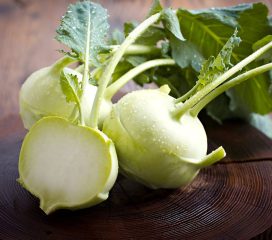
Kohlrabi is a member of the cabbage family with a crunchy texture and mild, sweet flavour. Often eaten raw in salads or cooked in stews and stir-fries, kohlrabi is rich in vitamin C, fibre, and potassium. Its bulbous stem and leafy greens are both edible, offering versatility in the kitchen. Kohlrabi supports immune health and digestion and adds a refreshing crunch to dishes.
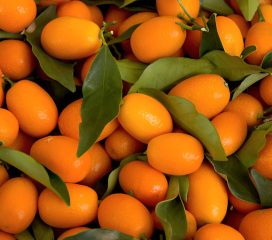
Kumquat is a small citrus fruit with an edible peel and a sweet-tart flavour. Native to Asia, it is eaten whole or used in marmalades, salads, and garnishes. Rich in vitamin C and fibre, kumquats provide antioxidant benefits and support the immune system. Their bright colour and unique flavour make them a distinctive addition to both sweet and savoury recipes.
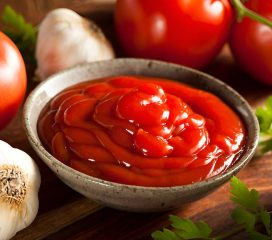
Ketchup is a thick, tangy condiment primarily made from tomatoes, vinegar, sugar, and spices. Originating from Asian sauces and popularised in the West, it is commonly used as a dip or topping for fries, burgers, and sandwiches. While commercially produced ketchup contains added sugars and preservatives, homemade versions can be healthier. It adds sweet and acidic notes to enhance the flavour of many dishes.
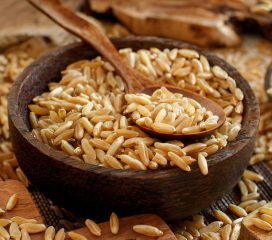
Kamut is an ancient grain related to wheat, known for its nutty flavour and chewy texture. It is higher in protein and minerals such as selenium and zinc compared to modern wheat varieties. Kamut flour is used in baking bread, pasta, and cereals, offering a wholesome, rich taste. It contains gluten, so it’s unsuitable for those with gluten intolerance.
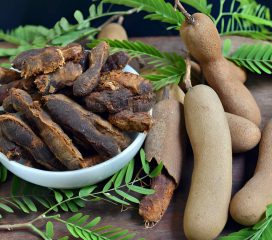
The ketchup tree is another name for the tamarind tree, whose fruit pulp is widely used in cooking across Asia, Africa, and Latin America. Tamarind has a sweet and sour flavour, commonly used in chutneys, sauces, and beverages. It adds tanginess and depth to dishes such as pad Thai and tamarind rice. Tamarind is also valued for its digestive properties.
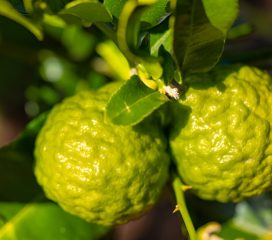
Kaffir lime is a small, knobbly citrus fruit widely used in Southeast Asian cooking. Known for its intensely fragrant rind, the fruit adds a sharp, citrusy flavour to curry pastes, sauces, and marinades. Its juice is very sour and used sparingly, while the zest is prized for its depth of aroma. The glossy, double-lobed leaves are equally important in cooking, often added whole to soups, curries, and stir-fries to infuse a fresh, floral-citrus note. Rich in essential oils, kaffir lime and its leaves are also valued for their antibacterial properties and ability to aid digestion.
l
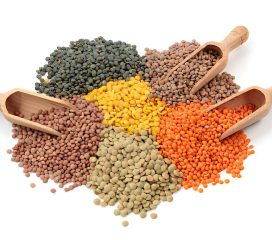
Lentils are small, lens-shaped legumes commonly used in Indian, Middle Eastern, and Mediterranean cuisines. Available in various colours—red, green, brown, and black; they are highly nutritious, rich in protein, fibre, iron, and folate. Lentils cook relatively quickly compared to other legumes and are versatile in soups, stews, salads, and curries. They help maintain stable blood sugar levels and support digestive health. Their mild, earthy flavour easily absorbs spices and herbs, making them a staple ingredient in vegetarian and vegan diets worldwide.
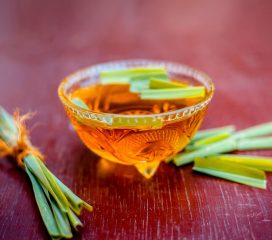
Lemongrass is a tall, fragrant grass used widely in Southeast Asian cooking. It imparts a fresh, lemony aroma and citrus flavour to soups, curries, teas, and marinades. Often used whole and removed before serving, lemongrass adds brightness and complexity to dishes. It contains antioxidants and compounds believed to have anti-inflammatory and antimicrobial properties. Fresh lemongrass stalks are preferred, but dried or powdered forms are also available.

Lime is a citrus fruit known for its sharp, tangy flavour and vibrant aroma. It is a key ingredient in many global cuisines, especially in Mexican, Indian, and Southeast Asian dishes. Lime juice and zest add acidity and freshness to salads, marinades, beverages, and desserts. Rich in vitamin C and antioxidants, lime supports immunity and skin health. Its bright, zesty notes help balance spicy and rich flavours.

Lavender is a fragrant herb often used in baking, desserts, and herbal teas. With its floral, slightly sweet aroma, it enhances flavours in biscuits, syrups, and infusions. Lavender is also valued for its calming properties in aromatherapy. Culinary lavender is milder than the ornamental variety and should be used sparingly to avoid bitterness. It pairs well with lemon, honey, and herbs like rosemary.
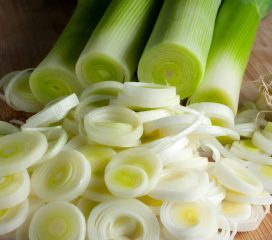
Leeks are a vegetable in the allium family, related to onions and garlic, with a mild, sweet flavour. The white and light green parts are most commonly used in soups, stews, and sautés. Leeks add depth and subtle sweetness to dishes and are rich in vitamins A, C, and K, as well as fibre and antioxidants. Their gentle flavour makes them a versatile ingredient in many cuisines.

Lotus root is the edible rhizome of the lotus plant, widely used in Asian cuisine. It has a crunchy texture and a mildly sweet, nutty flavour. Often sliced and stir-fried, pickled, or added to soups, lotus root adds both visual appeal and a satisfying crunch to dishes. Rich in dietary fibre, vitamin C, and potassium, it supports digestion and immunity. Lotus root’s unique pattern of holes makes it visually striking and a popular ingredient in Chinese, Japanese, and Indian cooking.

Liquorice root is a sweet, aromatic herb used both medicinally and in cooking. It has a distinctive anise-like flavour and is often used to flavour sweets, teas, and herbal remedies. Liquorice contains compounds with anti-inflammatory and soothing properties, traditionally used for digestive and respiratory health. In moderation, it adds a unique sweetness and depth to dishes and beverages.
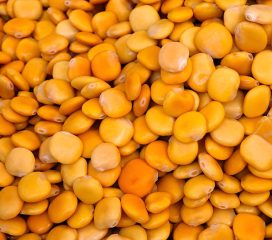
Lupin beans are legumes from the lupin plant, commonly eaten in Mediterranean and South American cuisines. They have a firm texture and a slightly bitter, nutty taste, usually mellowed by soaking and brining before eating. Traditionally enjoyed as a bar snack or appetiser, lupin beans are also ground into flour and used in gluten-free baking. High in protein, fibre, and essential minerals, they’re gaining popularity as a plant-based superfood.

Litchi, also spelt lychee, is a tropical fruit native to China, prized for its sweet, floral flavour and juicy texture. It has a rough red skin that is peeled away to reveal translucent white flesh. Litchis are eaten fresh or used in various dishes, including desserts, beverages, and salads. Rich in vitamin C, antioxidants, and fibre, they support immune health and digestion.

Lamb refers to the meat of young sheep, known for its tender texture and distinctive, mildly gamey flavour. It is popular in Mediterranean, Middle Eastern, and Indian cuisines, often cooked in curries, roasts, and grills. Lamb is rich in protein, iron, and vitamin B12. Its flavour pairs well with herbs like rosemary, mint, and garlic, making it a versatile and cherished meat choice worldwide.
